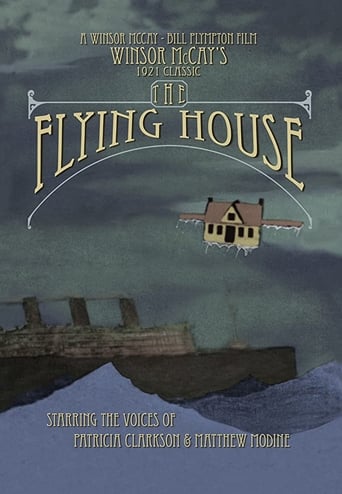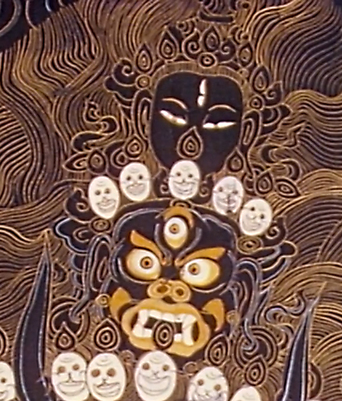

Dreams of the Rarebit Fiend: The Flying House (1921)
After eating a rarebit at a party, a woman has a strange dream in which her husband converts their home into a flying machine to escape having to pay the exorbitant interest on the mortgage, on a flight that takes them around the world and to the moon.
Watch Trailer
Cast


Similar titles
Reviews
Save your money for something good and enjoyable
I don't have all the words right now but this film is a work of art.
A waste of 90 minutes of my life
A Masterpiece!
"The Flying House" is a 1921 11-minute short film that has its 95th anniversary this year. it was made by American animation pioneer Winsor McCay back then and it is of course a black-and-white silent film. The story is similar like in the man's other "Dreams of the Rarebit Fiend" entries, at least early on. Somebody eats a rarebit and has a very bizarre dream as a consequence. This time, it is a woman who dreams (because of high mortgages) that her husband flies away with her. But not in a balloon or airplane, he uses their house. And they don't fly just to the next beach, they fly to the moon and meet somebody there who is not so happy about his new guests. The moon really was used quite a bit in these very old films as target destination. I personally must say that this is not my favorite film from the Rarebit trilogy, but for 1921, it wasn't bad of course and I wonder how much this one here inspired the makers of "Up" perhaps. All in all, I recommend the watch only to the most hardcore animation lovers.
This is one of the coolest early animations I have seen and probably the most enjoyable here in the 21st century of all the McCay films. Unlike his early LITTLE NEMO and GERTIE cartoons, this one is 100% animated and have marvelous animation and exquisite backgrounds. Sure, it's black and white and is a silent film, but for its time it was a terrific film--one that is about as good as you can find at that time.Like the other "Rarebit" films from McCay Studios, this film just goes to show you that the recent commercial about cheese IS correct--"Behold the power of cheese"! All feature people eating cheese and then having bizarre dreams. This flying house one is just amazing and a lot of fun. The lady who partook of the cheese dreams that her husband uses his genius to make their house fly!! And, after buzzing around the Earth for a while, the house leaves orbit and heads out to space--being highly reminiscent of the Georges Méliès film LE VOYAGE DANS LE LUNE. A wonderful and timeless piece of history--not to be missed.
Winsor McCay was a newspaper cartoonist in the glorious days when cartoonists were given an entire over-sized Sunday newspaper page on which to give their artwork free rein. An absolute master of perspective, McCay was best at dream-like and nightmarish scenarios, which explains why his two most successful projects were 'Little Nemo in Slumberland' (dreams) and 'Dreams of the Rarebit Fiend' (nightmares).This is a good place to explain the origin of that weird word 'rarebit'. A dish of toasted cheese and bread, with seasoning, is known in Britain as 'Welsh rabbit'. This was meant as an English joke: supposedly, the Welsh are so incompetent that toasted cheese is the nearest they can come to cooking a game dish (rabbit). In American restaurants, Welsh rabbit was often the least expensive dish on the menu (because of its cheap ingredients) but uninformed customers would often mistakenly assume that Welsh 'rabbit' must be a meat dish, significantly cheaper than the other meat dishes on the bill of fare. To avoid this misunderstanding, some American host changed the spelling to 'rarebit', and it caught on. In McCay's comic strip 'Dreams of the Rarebit Fiend', a man or woman would go to bed after a dinner of Welsh rarebit, and would experience a bizarre nightmare. This popular newspaper strip fostered at least one live-action silent film (by Edwin S Porter), and several animations by McCay himself.'The Flying House' (an instalment in McCay's 'Rarebit' series) is the most lyrical of his cartoons, and only slightly nightmarish. A woman joins her husband Bert in bed after eating a rarebit. But she awakens to discover that Bert has gone up to the attic to tinker with some odd machinery. It develops that Bert has changed the house into an aeroplane, which he takes into the stratosphere, and then to outer space.SPOILERS COMING. McCay's visuals are impressive, the more so since he drew them all himself without the help of 'in-betweeners'. During the outer-space climax, I was intrigued that he drew Earth from an oblique angle ... rather than the usual cliché of putting it 'right-side up' with the Antarctic lowermost. The flight of the house is lyrical, rapturous, and -- unlike McCay's other 'Rarebit' adventures -- not remotely nightmarish ... until the very ending, when the house explodes and the husband and wife plummet to Earth. I'll rate this delightful cartoon a full 10 out of 10: it isn't very funny, but McCay is striving here for thrills and visual splendour rather than laughs.Sadly, almost none of McCay's original artwork survives. In 1982, I interviewed American comic-book artist Leonard B Cole, who worked alongside artist Robert McCay (Winsor's son) in the 1940s. Cole told me that McCay once brought a large quantity of his father's artwork to the studio where they worked, and offered to give it away to any artist who would take it. There were no takers, so McCay simply threw out the lot! Today, those illustration boards would be priceless. (Long before I met him, Cole regretted his decision to pass up the offer.) Now, if I only knew the precise date when Robert McCay threw away those art boards, I could power up the time machine and...
"The Flying House" is a creative and interesting feature from Winsor McCay's 'Rarebit Fiend' series. It has a little less outright comedy than some of his other features, but it is an intriguing movie in a couple of other respects. Most particularly, the dream sequence here is much more of a story than are the dream sequences in the other surviving features from the series. More than that, it's an interesting dream that follows a very believable 'dream logic' of its own.The dream in this one has a man responding to the threats of a mortgage company with a most unusual plan that could only work in a dream. But rather than simply use the idea of "The Flying House" for a few laughs, McCay takes it through a series of episodic events that recreate pretty well the strange chains of events that happen in our dreams. It really adds some interest, even beyond the opportunity to see McCay's usual creative details and skillful animation.


